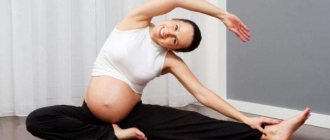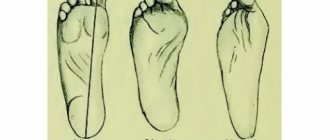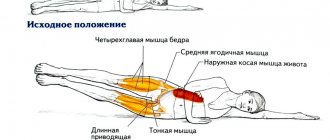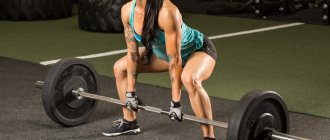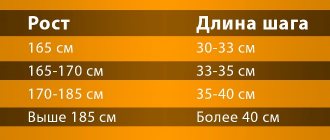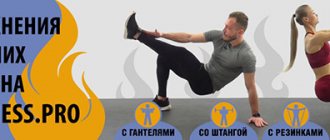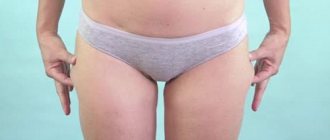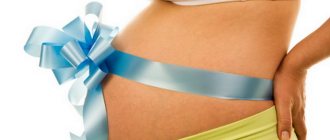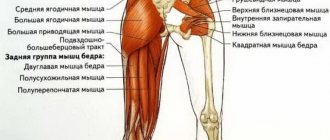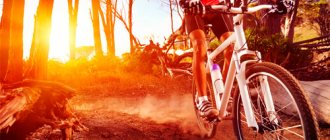Benefits of the pose
This exercise has a number of useful properties:
- promotes stretching of the thigh muscle;
- improves mobility of knee and hip joints;
- gently stretches the back muscles;
- improves cerebral circulation;
- relieves the effects of stress and fatigue;
- allows you to relax after a hard day;
- has a beneficial effect on the condition of the spine.
The asana is useful for those who spend most of their time in a stationary position. At the same time, the pose allows you to relax your back, stretch your spine and relieve spasm in the neck. For people with high blood pressure, exercise gives them the opportunity to get rid of headaches. Balasana is of great benefit to people with chronic fatigue syndrome, allowing the body to rest in a short period.
This asana has a beneficial effect not only on the physical, but also on the psychological state. If you perform the exercise several times a day, your mood improves, your concentration improves, and symptoms of depression and apathy disappear. This pose is suitable for people prone to anxiety disorders. It allows you to relax your body and mind, eliminating emotional tensions.
By doing the exercise at night, you can forget about insomnia. This reduces the risk of nightmares and frequent awakenings for no reason.
Ananda balasana
Lie on your back. Bend your legs and press your thighs toward your stomach. Extend your knees to a right angle, spread your legs to the sides and grab your feet with your hands. Press your palms onto your heels. Hold the asana for 1-2 minutes . Repeat twice.
Possible contraindications
The asana is not recommended for people with severe pain in the knee joints. The pose can aggravate the symptoms of diarrhea, so if you have problems with the intestines, you should do the exercise with caution. Additional contraindications:
- cervical injuries;
- increased intracranial pressure;
- pregnancy;
- cauda equina syndrome;
- increased body temperature;
- congestion in the leg veins.
The exercise is not recommended for persons with abdominal pain of unknown etiology. The pose can provoke severe discomfort in the knees due to arthrosis, so in case of acute inflammatory diseases of the joints, you should not resort to the asana. If you have recently had an ankle injury, then it is recommended to refrain from this exercise. The same applies to fractures of the lower leg, knees and other injuries.
During menstruation, you should not resort to such poses, because bleeding may increase due to pressure on the abdominal area. The same remark applies to people with acute inflammatory diseases of the reproductive organs.
What is the most difficult thing when starting to master yoga asanas?
This is the ability to practice regularly and constantly remain motivated to progress in your own practice. When we start, the poses are not achieved completely or not at all; maybe we don't have enough strength or breath or even patience. It is important to remember here that yoga is not a competition, it is a path, your own, personal and individual; and although you are just starting, after a while you will gain experience, your body will become more pliable, and practice will be more fun. There is no hurry, this is a long journey, where the process itself is the most interesting thing.
Watch the video
Execution technique
This pose should be performed while sitting on your knees. If this area is problematic, it is recommended to place a soft mat. You need to sit so that your knees and big toes touch. You need to place your buttocks on your heels and your upper body on your hips, stretching your arms across the floor. While performing the asana, you need to rest your forehead on the mat.
Your arms can be stretched forward or along your legs, but you must make sure that your shoulders and neck are not tense. In this position, you need to relax as much as possible and try not to tear your tailbone away from your buttocks. Breathing should be smooth and calm. It is recommended to stay in the asana for no more than a minute. If knee pain occurs, the exercise should be stopped immediately.
How to build a lesson
* Start it with a warm-up . Two to three minutes of joint gymnastics is enough.
* Perform asanas consistently . “You can choose only one block you need or combine them all into a single sequence,” comments Christina Kostina , a hatha yoga teacher at the Mind&Body studio and the author of the complex that we will show today.
* Take your time and watch the sensations in your body. The selected asanas are also suitable for those who have not practiced yoga before. Just repeat them after our teacher and watch how the body reacts to the load.
To perform asanas you only need a mat . Instead, you can lay a large towel on the floor.
Variations
For people with bad knees, there is a lightweight option that is also suitable for beginners. To do this, you need to take a blanket and place it between the back of your thighs and calves, and only then lower your buttocks onto your heels. When performing this option, you should remember that it is not recommended to round your back too much.
You must try to keep your stomach pressed against the front of your thighs and your neck not pinched. If you feel pain in the collar area, you need to place a small dense pillow under your head. This option is also suitable for people with high blood pressure.
Another type of asana for people who find it difficult to keep their back straight:
- Get on all fours. Spread your legs slightly so that your knees are hip-width apart.
- Then smoothly bend your knees and lower your buttocks onto your heels. At the same time, your arms should stretch forward.
- The stomach falls slightly into the area between the thighs, and the back bends slightly.
- If the spine is rounded, then it is recommended to place the forehead not on the floor, but with the arms bent at the elbows.
You should not be tense in this position; the whole body should be relaxed. Particular attention should be paid to the arms, back and hips. The last option for people with musculoskeletal diseases:
- Place a folded blanket under your hips and sit with your buttocks on your heels.
- Place a second blanket, folded several times, under your head and rest your forehead against it.
- As you exhale, extend your arms along your legs and relax your shoulders.
- Remain in this asana for 6 breathing cycles.
- Then smoothly raise the upper part of the body, resting your palms on the floor. After this, raise your pelvis and get on all fours.
You need to exit all exercise options slowly, not forgetting about breathing. Sudden movements are not allowed.
✅HOW TO BREATHE.
As a base, “Ujjayi” is practiced - “Breathing of the winner of the mind”: normal in depth, leveled in speed and power of flow, complete in air flow on exhalation and intake on inhalation, breathing with a hissing-whistle sound through the nose (the glottis is tense, behind as a result of which a slight, barely audible sound appears on inhalation and exhalation). Naturally, active pranayama is not done in this pose, nor is full yoga breathing, because the lungs are compressed. Breathing always comes through your nose, which should not be flattened (because we place our forehead on the floor or on our hands so that the nose is not pressed), the nose is completely free. The pose is suitable for observing the breath and subtle manipulations with it (Svara yoga, or mental alternating breathing).
Contraindications to yoga for beginners
Yoga has a number of contraindications, at least for beginners. You cannot start classes if you have:
- spinal injuries;
- acute forms of illness, mental disorders;
- chronic diseases;
- high or low blood pressure, dizziness, nausea.
The last two points are not strict contraindications, but in these cases you need to get a doctor’s permission to practice yoga. In addition, supervision of the mentor over the beginner’s practice in these cases is mandatory.
Ardha Matsyendrasana (Seated Twist)
- Sit up straight with both legs extended forward. Make sure your weight is on your sit bones and not your tailbone. If not, place a block or book or blanket under your buttocks.
- Bring your right knee toward your chest and move your foot toward the outside of your left thigh. Keep your back straight. And mentally lengthen your spine, as if you are being pulled up by the top of your head. Continue lengthening your spine with 10 deep breaths.
- Keep your left leg extended, if your body allows you, you can bend your left leg and place your heel at your perineum. If not, keep your leg straight.
- Inhaling, raise your left hand up, and exhaling, hug your right knee. Move your right hand behind you and place your fingertips behind your sacrum. With each inhalation, lengthen the spine, with each exhalation, deepen the twist.
- Keep your chin straight. Stay for 5 deep breaths.
- Repeat on the other side.
Urdhva Mukha Svanasana or Upward Facing Dog Pose
The effect of the asana: has a positive effect on the spine, strengthens the arm muscles, helps with back pain, opens and develops the chest, and helps normalize blood circulation in the pelvic area.
Technique: lie on the floor, bend your elbows and place your palms under your shoulders. Straightening your arms, while inhaling, lift your upper torso and bend your thoracic spine. At first, you can keep your thighs and legs on the floor, and look up. Tighten your buttocks, pull your shoulders down.
In a more complicated version of the asana, the feet should be placed on the toes.
There are two possible ways out of this position:
- Bend your elbows and lower your body to the floor.
- Push your hands off the floor, point your pelvis back and up and come out into Downward Facing Dog Pose.
"Corner" by the wall
Lie on your back with your feet against the wall. Raise your legs one at a time to the wall, rest your heels on it and press your hips against it. Spread your arms out to the sides and place them on the floor. Relax and close your eyes. Stay in this position for 2-3 minutes.
Chaturanga dandasana
Take a plank pose with straight arms. Bend your elbows and press them to your body, lower your body down until it is parallel to the floor. Work the muscles of the abs, hips and back, stretch the top of your head forward and your heels back. Stay in this position for 30 seconds . Return to the starting position and perform the asana again.
